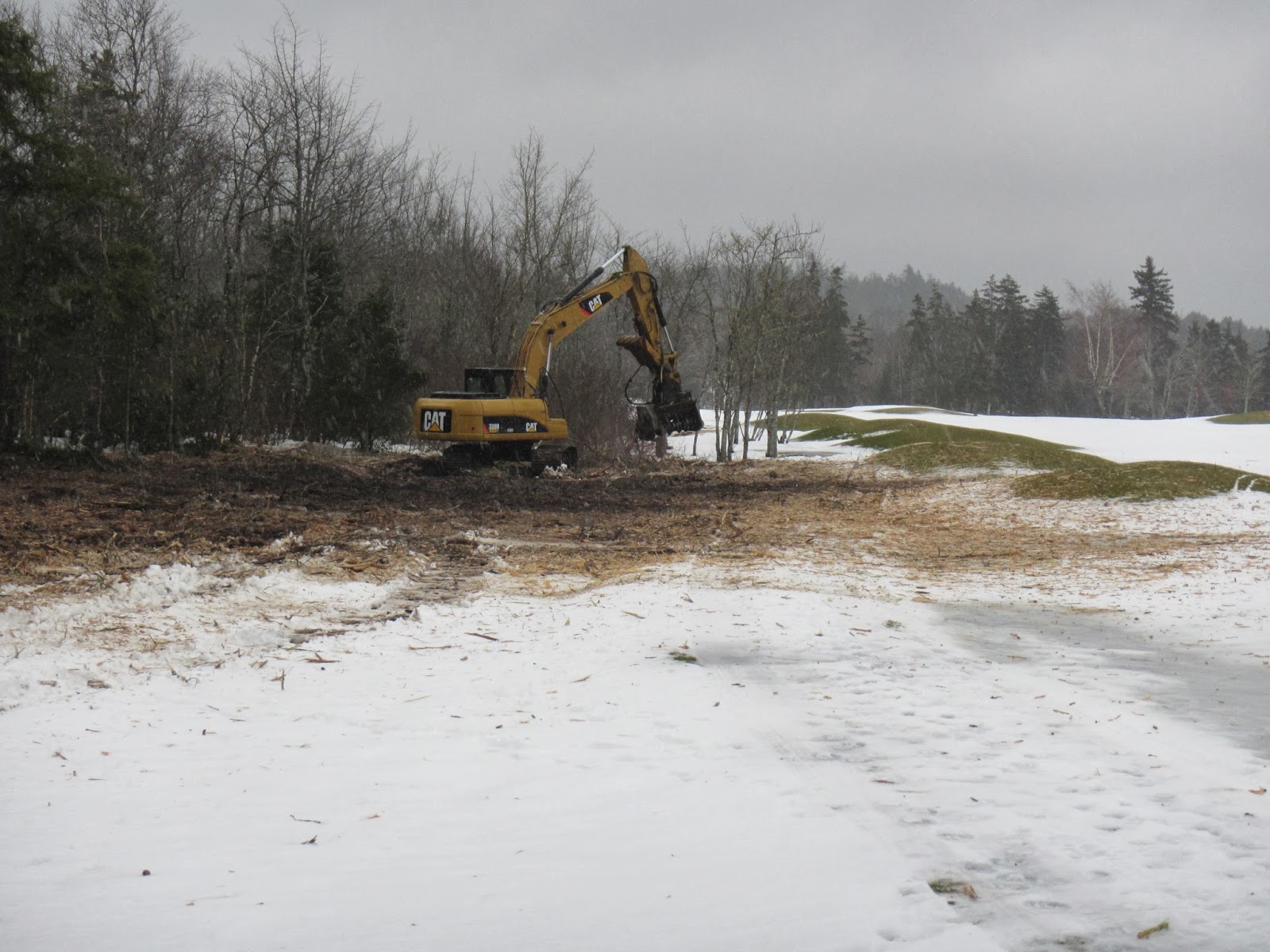On Monday of this week we began Project One and Nine (not a very creative name but direct). Our first step was to remove the elbow attached to the culvert at one pond. This elbow was installed a few years ago to increase the pond level and the general esthetics's of the area.
 |
| The cut off elbow. We will store this until the project is complete, and reuse to adjust water levels. |
The total height increase of the water level with the elbow in place was 18 inches. As you can imagine the effect of raising the pond level has the same result in the areas that drain into the pond, mainly the left side of number one cart path. Before considering this project the water level in that area was really not an issue as it was marked a hazard and generally unplayable. Due to what is scheduled to take place in the site it's necessary to make adjustments in the water table. Below is a photo of how wet it is after last week's after the rain storm. This is looking back to the tee from the rough on the left.
On Monday Bill and I removed the elbow and let the water level drop, hoping to relieve the some of the build up to the left of number in the area where the work will take place.
The original recommendation form Graham Cooke was to remove up to 50 percent of the trees in the area and save any specimen trees. 90% of the plant material in the area is referred to as Alders or Scrub.
 |
| Typical vegetation in the area. |
Upon inspection it became obvious that most of the trees were unhealthy due to the poor growing conditions. To complete the project, the earth works would only disturb the root systems further, making the stress on the already weakened greater. We decided at that point that there was little to save in the area. We would remove all vegetation and "grub" the roots from the site.
In large areas such as this manually removing trees via chain saw and labour would be very costly and time consuming. First the Alders or Scrub and trees would need to be cut and then removed from the site. Removal could involve three methods, trailering the material, burning on site or mulching.
Another method is to mulch the standing trees using an excavator and special tool attached to the operating boom. This removes the labour aspect (other than the operator) and the material handling costs. The mulch is dropped (or rather thrown) into the area and will eventually provide nutrients and a form of erosion control as it gets mixed into the surrounding top soil.
Jack Eisener, a member of the golf course and owner of
J. R. Eisener Contracting Limited, has a machine of this nature and was willing to help out.
Here's a link to ECL's website.
Below is a picture of what the site looked like before the clearing had started.
 |
| The ribbons represent the far left exterior of the clearing. |
Below is Jack using the"mulcher" to remove vegetation in the area. This is about the third hour of work.
Here is a video of the machine in operation.
The machine works quickly and the material left behind is small and manageable with our tractor mounted blower. In the spring when snow clears we will blow the excess back into the site. I will continue to post as the operation continues.
While Jack had his machine at the golf course we also requested that he clean up the driveway and entrance to the golf course. Over the years the forest has encroached on the road way and the power lines. In just a days work Jack had pushed a lot of the material back. When the snow melts we will clean up the rest of the mulch and eventually attempt to manage the weeds in the area on a more regular basis. Here are some before and afters of the road way.
 |
| Before... |
 |
| and after. |
 |
| Before. |
 |
| After. |










No comments:
Post a Comment